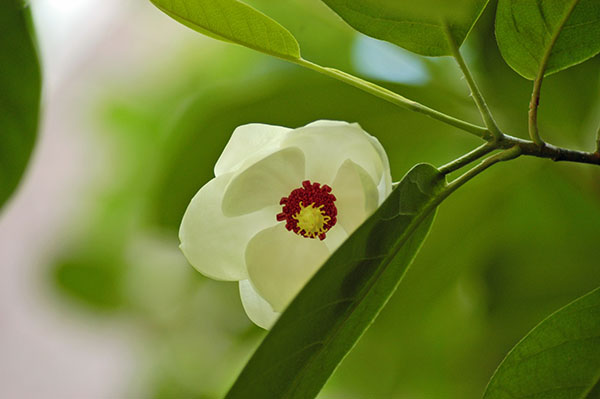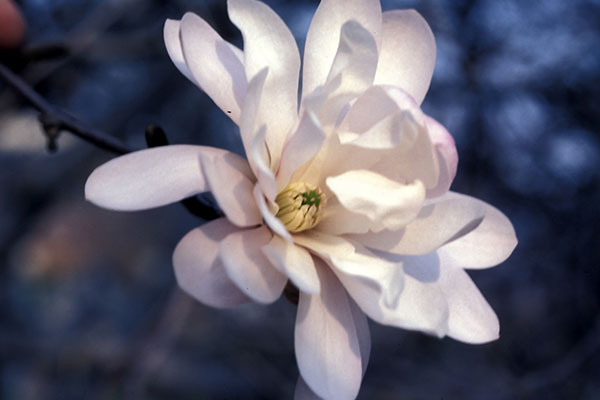Magnolia sieboldii
Oyama Magnolia
S. China, Manchuria, Korea, and Japan
Vase-shaped, somewhat coarse-textured, deciduous shrub or small tree native to understory forested areas in Japan, southeastern China and Korea.
Deep, moist, well drained, acidic soil. Supplement with leaf mold or peat moss.
Oyama Magnolia is a superb, handsome, large shrub or large tree with cup-shaped flowers that are borne either horizontally or slightly nodding on a 1 to 2.5 inch pedicel. The stamens form a pinkish to rose-crimson center. Flowers egg-shaped in bud, 9-12 tepals, 3-4 inches diameter when open, fragrant. The carmine fruit is about 2 inches long and houses scarlet seeds. Flowers appear from May-June and perhaps spradically thereafter. Prefers semi-shaded exposure in moist, well drained, fertlie soil.
Broad elliptic to oblong green leaves (3-6 inches long) turn golden yellow in fall. Dark green foliage in summer
Nodding fragrant white flowers (to 4 inches wide) with crimson stamens bloom from late May to July (about 6 weeks).
Showy pink oval fruits (to 3 inches long) split open in fall to reaveal orange to red seeds.
Seed, cuttings.
'Colossus' - a tetraploid selection with somewhat larger flowers and tepals of more substance.
'Michiko Renge' - a double-flowered form.
'White Flounces' - with semi-double, up to 24 petals, 4 inches across, flower almost flat rather than cup-shaped.






